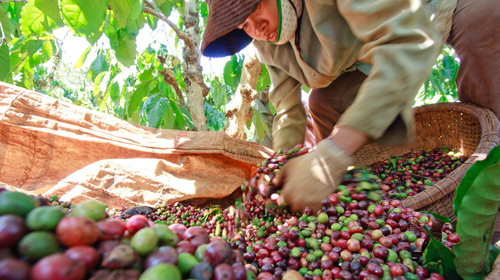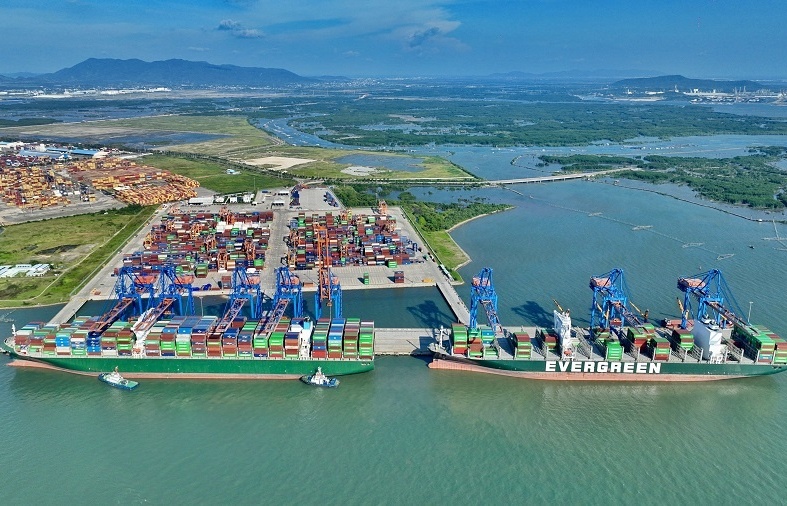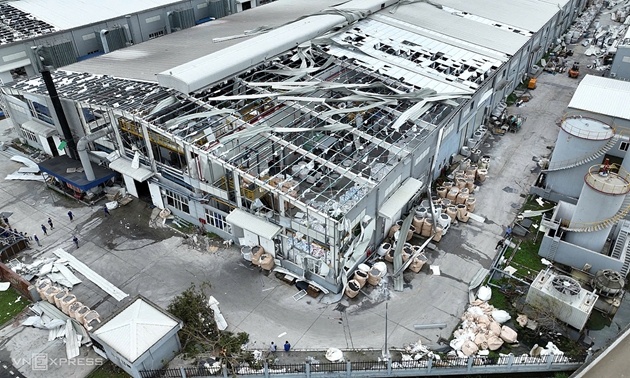Coffee prices in sharp fall

illustration photo
During the opening session of 2015 on the Intercontinental Exchange (ICE) in London robusta coffee prices have fallen sharply, dropping to below the $1,900 per tonne benchmark seen at the end of December 2014.
Coffee future prices for March and May have dropped $55 to $1,864 per tonne and $51 to $1,889 per tonne, respectively, a fall of 2.95 per cent and 2.7 per cent per tonne.
Following the decline in the world market, the price of domestic coffee has also gone down. In DakLak, Vietnam’s capital of coffee production, the price has reduced VND1,000 per kilogramme to VND38,800 per kilo. In Lam Dong the coffee price has tumbled VND1,300 per kilo to VND38,500. Gia Lai is the only locality that has been able to maintain VND39,100 per kilo.
According to the Vietnam Coffee-Cocoa Association (Vicofa), in 2014 coffee exports were estimated at 1.6 million tonnes, valued at $3.6 billion, an increase of 33.4 per cent in volume and 32 per cent in value compared to the previous year.
Vicofa has predicted that in 2015 Vietnam would continue to be influenced by weather changes. In particular El Nino, caused by periodic warmings of the Pacific, could affect the world agriculture sector as farmers contend with drought in Asia or excessive rainfall in South America. Coffee is among the crops at risk and coffee production is expected to drop worldwide.
Vietnam’s coffee production in 2015 is forecasted to fall by 20 to 25 per cent compared to 2014. Vicofa thus has revised down the 2015 target for coffee export turnover by 11.1 per cent compared to 2014, down to 1.4 million tonnes worth around $3.2 billion.
The 2014/2015 coffee harvest has nearly finished. Across the Central Highlands, droughts during the coffee growing stage have severely affected the total yield as there was only enough water for 60 per cent of the planted area.
Meanwhile, prolonged frost has made arabica coffee bean crops in Lam Dong and Son La drop by 30 per cent in estimation compared to last season. Also, hurricanes that passed through some regions, particularly Gia Lai, have resulted in early flowering and may have hurt the output of next season. As a result, the current crop is likely to be less and the 2015/2016 crop is expected to be even lower.
Likewise, according to the Western Highlands Agriculture and Forestry Science Institute (WASI), the growing area of 20-year-old coffee plants currently spans 100,000 hectares and needs to be replanted, but progress is very slow. Therefore the current crop is estimated to drop by 20 to 25 per cent compared to the last crop and next season looks to be worse.
What the stars mean:
★ Poor ★ ★ Promising ★★★ Good ★★★★ Very good ★★★★★ Exceptional
Latest News
More News
- Vietnam’s economy on track for 6.5 per cent growth despite Typhoon Yagi, says HSBC (October 01, 2024 | 16:46)
- Vietnam urges China to expand market access for agricultural products and strengthen trade ties (October 01, 2024 | 16:42)
- IMF predicts Vietnam's economic growth to reach 6.1 per cent in 2024 (September 30, 2024 | 18:26)
- Deli Group breaks ground on $270 million factory in Hai Duong (September 30, 2024 | 18:17)
- Government considering tax on multiple properties (September 27, 2024 | 20:17)
- Accuracy more vital than ever in dawn of AI (September 26, 2024 | 20:44)
- Vietnam remains attractive destination for US businesses (September 26, 2024 | 20:23)
- New innovation centre inaugurated during HEF 2024 (September 25, 2024 | 09:00)
- China's Geely to build $168 million automobile facility with Tasco in Thai Binh (September 24, 2024 | 19:03)
- Spate of claims made in typhoon aftermath (September 19, 2024 | 17:00)




















 Mobile Version
Mobile Version